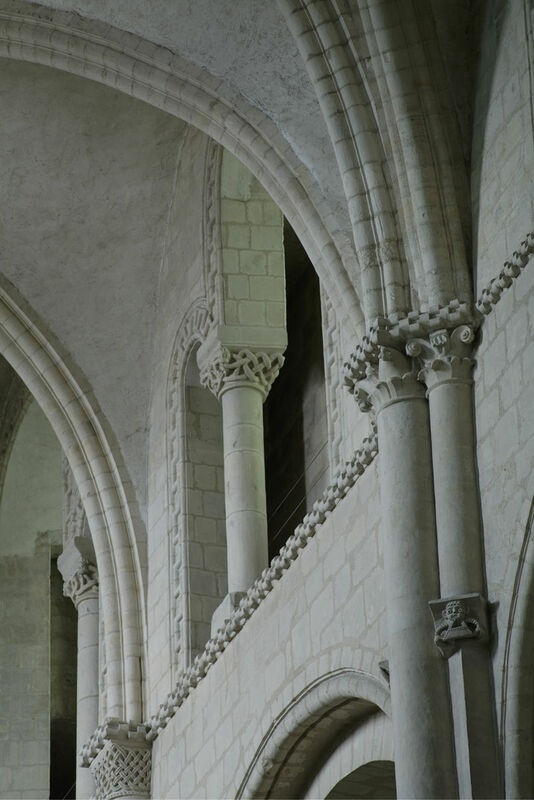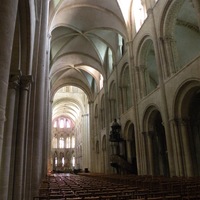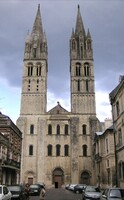Saint-Étienne at Caen
Type:
Churches,
Monasteries
Date:
1060 to the thirteenth century
Location or Findspot (Modern-Day Country):
France
Description:
William "the Conqueror" (1028–1087) made Caen an important town in Normandy by founding two Benedictine monasteries there. The one for men was dedicated to Saint-Étienne (St. Stephen) and the women's abbey was dedicated to La Trinité (the Trinity). William may have built them to expiate the sin of marrying his cousin Matilda of Flanders. Built in the 1060s (dedicated in 1066), Saint-Étienne's sober twin-towered facade was augmented with spires in the thirteenth century. It has a tripartite interior elevation with the nave arcade, gallery, and clerestory roughly equal in height. Rib vaulting in the nave, modeled on the rib vaults at Durham Cathedral, replaced the original groin vaults around 1120; from Caen, the use of rib vaults spread elsewhere in France. In the 1160s, the eastern end was updated with interlocking chapels and flying buttresses. William had wanted Saint-Étienne to be the Norman royal mausoleum—he was buried before the high altar (Matilda was buried in the women's abbey church)—but his successors were not interred there.
Relevant Textbook Chapter(s):
7
Repository and Online Resources:
• Read more about Saint-Étienne at Caen on the Mapping Gothic France website.
• See more images on the Mapping Gothic France website.
Image Credits:
Wikimedia Commons



